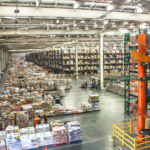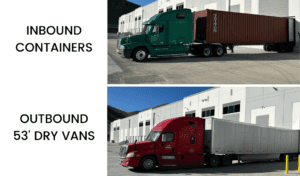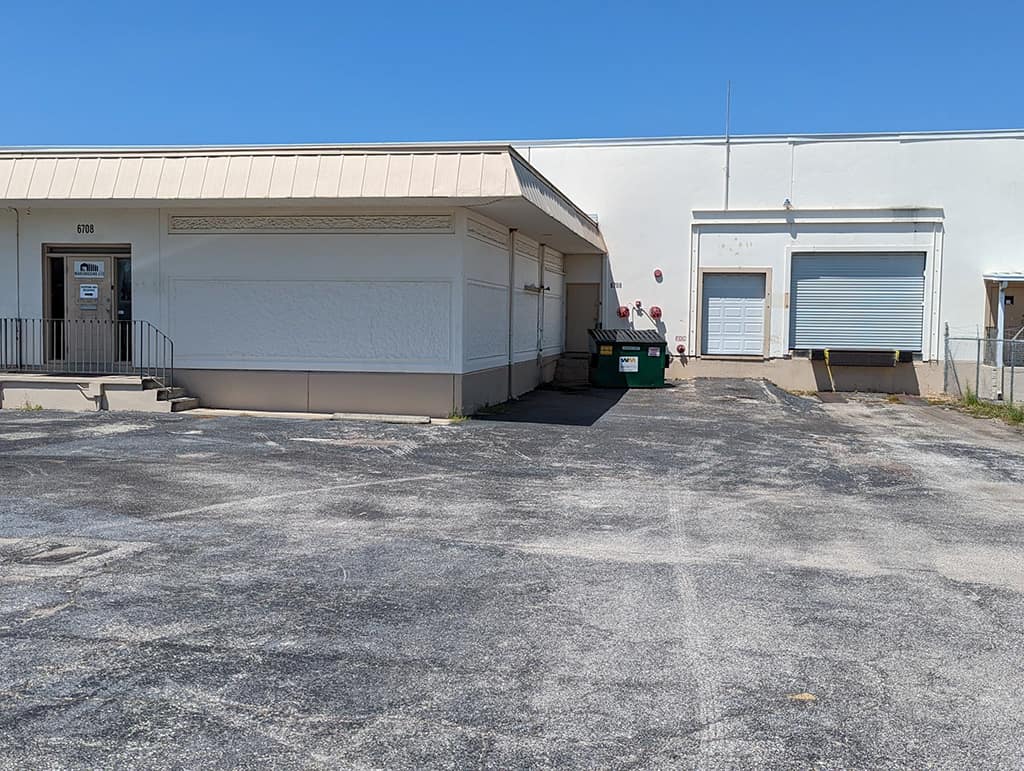The Impact of Warehouse Audits on Your Operation
Warehouse audits are performed across all functions and areas of busy, growing warehouse operations as a quick and simple way to assess the current state of operations while identifying specific existing opportunities. Since warehouse leadership is spread thin in most operations, there is little time to spend digging into ways to improve or streamline operations; this is where the warehouse audit comes in. The warehouse audit provides a high-level assessment of all operations with impactful specifics identified to enhance the operation’s most pressing pain points. Conduct your warehouse audit using these proven warehouse audit points.

Warehouse audits are a simple, yet highly effective way to dig into your operations from a high-level starting point. By analyzing each audit point, the opportunities and trouble areas show themselves and give the leadership team direction as they work to improve operations and efficiency. The following are the most impactful reasons to perform a warehouse audit.
- Identify opportunity for cost savings in your operation.
- Identify and reduce inaccuracies and errors within your operation.
- Measure your operation against standard best practices.
- Ensure your operation continuously improves.
Summarized List of Warehouse Audit Points
- Safety
- Facility Cleanliness
- Standardization of Warehouse Operations
- Measurability of Warehouse Operations
- Equipment, Tools, and Resources
- Technology Utilization
- Focus on Continuous Improvement
- Waste within Operations and Facility
- Receipt and Order Entry Method(s)
- Validation of Inventory During Receipt
- Opportunity for and Utilization of Cross Docking
- Quality and Efficiency of Product Putaway Process
- Storage Media Type Evaluation and Analysis
- Condition of Stored Inventories
- Order Lead Time
- Pick Path Density and Picker Travel Time
- Packing Cartonization Process
- Outbound Quality Control Process
- Outbound Carrier and Service Selection Process
- Inventory Cycle Counting Practice
- Staff Training and Understanding of Their Impact
The Details – Warehouse Audit Points
Since warehouse operations are each unique with their own sets of requirements, this section serves as a general warehouse auditing solution for diverse fulfillment and warehousing operations to implement. The details within each warehouse audit point below seek to help the audience understand:

- How does this warehouse audit point impact your operation,
- What exactly we are looking at and talking about regarding the audit point,
- How can you measure or assess this warehouse audit point,
- Any general, standard insights or recommendations to consider on the warehouse audit point.
It is important to not only consider each warehouse audit point regarding your own unique operations, but also in regard to your competitors and industry best practices. That is, we understand that some amount of uniqueness is required for your operation, however certain items should be standard across industries and competition. Continuous improvement, staff training and development, and lean tendencies are key pillars to the foundation of best-in-class operations.
1) Safety
Safety must be the top priority within every warehouse operation; everyone goes home in the same condition that they arrived for the day. Leaders within the organization are expected to set clear expectations and safe practices across the operation to ensure staff is properly trained and equipped with the tools they need to safely complete their job each day. Beyond the humanitarian desire we should all have to provide our valuable team members with safe working conditions, it can be costly to deal with worker compensation claims and staff turnovers driven by an unsafe environment. Observe the staff to see if they are performing any unsafe activities, and if they are using their provided equipment safely. Evaluate the operation on the condition of inventories, shelving, beams, and other obstructions within the facility; are their obvious signs of damage from equipment or other negligence? Is the facility designed with safety in mind with features such as signage, defined pedestrian walkways, dome mirrors, restricted facility entryways, and other safety-minded attributes?
To quickly evaluate the safety of a facility consider when the last safety incident was, how frequently these incidents occur, if there is safety signage around the facility, and how often the team discusses and reflects on the importance of safety. If your operation has been fortunate enough to never experience a safety incident then you may still need improvements in your operation to keep it that way. Staff must be repeatedly trained and coached to prioritize the safety of themselves and others above all else,

2) Facility Cleanliness
In our experience the cleanliness of a facility sets the foundation for expectations across the facility and operations. Put another way, an operation with a cluttered, chaotic external appearance is often chaotic once you start digging into the detailed processes. Conversely, a tidy clean facility where each thing has its place is more likely to run a leaner, more efficient operation. Questions to consider when judging facility cleanliness are: Are things scattered around and disorganized? Is the facility and departments consistently clean or is there variation? Are there work areas with too much or too little? Do the tables and workstations have a bunch of stuff on them that is not needed or used?
Judging facility cleanliness is straight forward, however we often make excuses or lower the standards when we look at our own facilities so we must be diligent with high expectations as we audit each area and space within the facility. To assess your facility’s cleanliness, walk the interior and exterior of the property; observe each separate area or department, and the facility as a whole. Remember cleanliness in one area does not excuse clutter in another area; likewise, the fact that you are in the Peak season is not an acceptable reason to lower your cleanliness requirements. We recommend learning more about The 5S System to approach cleanliness at your facility.
3) Standardization of Warehouse Operations
Standardization is a key pillar to creating a scalable warehouse operation. Ensuring all functions and tasks are performed in the same method by all staff creates repeatable processes that are easy to train others to do. Additionally, standardization enables continuous improvement because standardization ensures the same outputs are expected by each staff, and thus small continuous changes are made to optimize that expectation over time. Standardization within your operation simply means that all staff are doing ,and are expected to do, job functions and tasks in the same standard fashion, following the same process, and achieving the same outputs. Are staff performing the same jobs differently, or are they being held accountable to perform in a designated fashion?
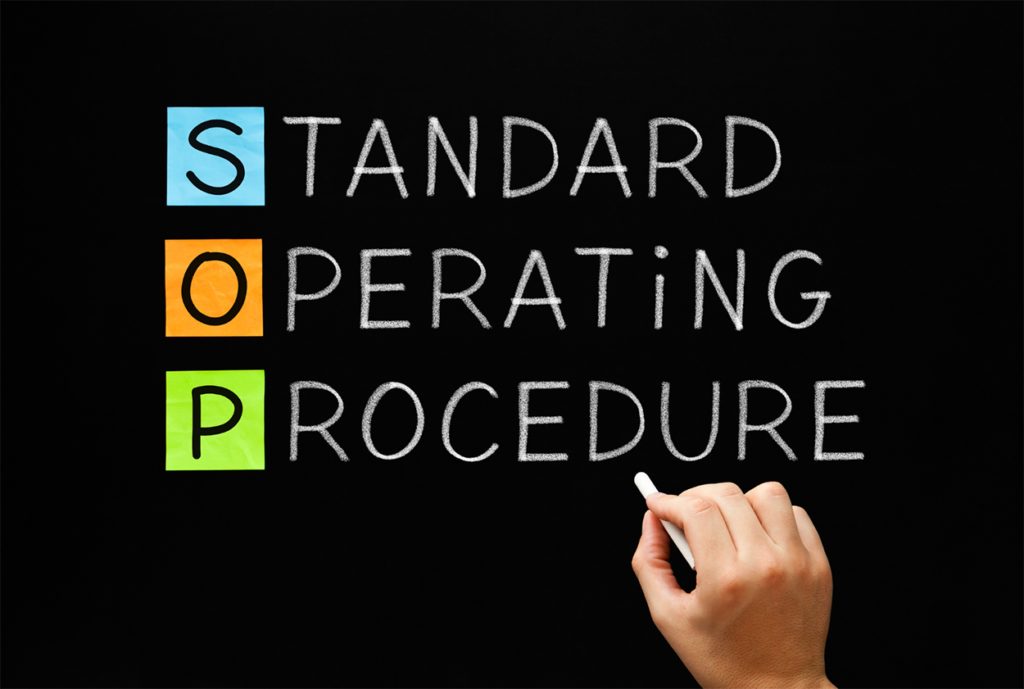
Standardization is more difficult to judge than it initially seems. This is because we often try to justify unnecessary variations or differences in processes as necessary, because of some exceptional instance at hand that cannot be avoided. To judge your operations for standardization, observe multiple operators performing each function in your operation. Some questions to ask may include: Are the operators doing everything the same way? How is the staff trained to achieve standardization? Are processes documented? We recognize many operations perform many variations of work; however the goal is to standardize as much work as possible so that only the final, least possible amount of work to be done is the non-standard or custom segment (also known as abnormal work). Ultimately to achieve standardization we find it most important that staff is properly trained as this has the most immediate and direct impact on how work is performed daily.
4) Measurability of Warehouse Operations
Measurable processes are imperative to achieve efficient warehouse operations that continuously improve. Cost reductions and better business decisions are also directly driven through having measurable warehouse operations in place; data and measurements provide the ability to minimize risks and uncertainty. When we talk about measurability we just want to know what metrics and data you have in your operations, and how do you use those metrics or data in your business?
To assess the measurability of your operations identify which processes and functions are measured today, how accurate those measurements are, how often those measurements are referenced when making business decisions, and what processes are not measurable. This is an opportunity to surface possible metrics that drive continuous improvement. If a process is designed with no possible way to measure, then redesign the process to include measurements or else you will never be able to knowingly improve that process. Following warehouse best practices enables smoother operations and often includes built-in Key Performance Metrics (KPIs).
Technologies and software enable warehouses to record vast amounts of data, so it is often the case that operations must eventually adapt new technology solutions to further advance.
5) Equipment, Tools, and Resources
For your staff and team to succeed they must be provided with and trained to use the Equipment, Tools, and Resources that they need to do what is expected of them in their role. Your staffs’ failure is YOUR FAILURE; and their success is your success. Often leaders and companies equip the team poorly, and then blame them for their poor performance when things go awry. These leaders must recognize that the staff was never provided with what they needed to succeed. Consider what resources are needed for each job function in the operation, and ensure those resources are provided.
Assessing the equipment, tools, and resources allocated to the operation presents challenge because operators do not know what they do not know; that is, if you are not aware of alternative tools and resources to achieve outputs then it is difficult to recognize gaps or room for improvement. To assess the resources provided to your operations ask questions such as: Are there obvious gaps or opportunities? How is the condition of existing resources? Are staff repeatedly requesting the same item(s)? Is the team trained to use their resources? and How do your equipment, tools, and resources compare to those used by your competition and similar operations? The equipment, tools, and resources provided to the staff should be continually monitored as operations and needs continuously change. It is effective to ask the staff doing the work what resources they need to better do their job and to ensure they are fully trained to utilize all existing resources.
6) Technology Utilization
Today’s competitive technology rich culture requires efficient warehouse operations to use technology across operations, with dominant players often realizing technologies as a competitive advantage. Technology use directly impacts the costs and capabilities of an operating warehouse. Technology use must be diversely evaluated across operations, including but not limited to: hardware – RF Scanner, Thermal Printers, Laser Printers, Scales, Dimensionalizers; software – Warehouse Management Systems, Transportation Management Systems, Barcode Label Software, Labor Management System; business IT – Wireless Internet, Networking, Security Systems.

Evaluating the technology utilization of a company is complicated by the evaluator’s (lack of) familiarity with diverse technologies and the ability to envision a more technology rich operation that does not exist today; frustratingly because of this, evaluators are often ill equipped to provide feedback on this audit point. It is important to evaluate the use of technology across the entire operation to understand: What is done manually vs automated? Are there known ways to automate the currently manual processes? If no known solutions exist can you find any options via deep research? Does the operation function exactly as it would in the ‘perfect’ world and if not then what technology could be used to achieve the perfect state? If currently running a nontechnical operations then we recommend slowly rolling out new technologies, although there are instances when a one-time mass rollout is best. If using technology in operations today, evaluate if current systems are the best fit for current and future needs, or if alternative systems should be considered. It is notable that ultimately most operations require some amount of custom development once a certain size and complexity is reached.
7) Focus on Continuous Improvement
Warehouse operations must continuously improve to keep up with best-in-class competitors. It is no longer enough to just maintain operations that are accurate and get current customers orders out; we must create processes that are continuously improving to fulfill more orders with less resources in less time for less money. This is the only way to keep up with giants like Amazon as they continue dominating the market. Though continuous improvement sounds daunting and complicated, it is simply creating a workplace and culture where everyone is empowered to make and test small changes over time; then over time exponential math kicks in to ultimately realize significant change. Are things running the same way they did 5 years ago, or have throughputs drastically improved from continuous change?
Evaluating continuous improvement in an operation can be done quickly by reflecting on the recent history of operations. When was the last time a change was rolled out in operations? Was it a big or small change? How long was that change in “the pipeline” before implementing? For deeper reflection think about the last time an employee made a change that ‘failed’, was the employee scolded and put down or encouraged to dust themself off and give it another go? Ultimately continuous improvement starts with a culture where everyone (the staff and leaders) feels safe to fail; this must be genuinely and consistently driven and exemplified from the top down.
8) Waste within Operations and Facility
Waste is excess to your operation, so focusing to reduce waste yields noticeable results. Reducing waste leads to cost savings, quality improvement, and following the best practices of standard warehouse operations. We are identifying anything done that does not add value to the final output; this is waste. Waste comes in many forms and is a core focus of Lean warehousing principles. Are there box sizes at the Packing Station that never get used, or is the Picking staff travelling excess distance to gather all the items to fulfill an order? These are forms of waste; wasted materials and wasted time and/or distance, respectively.
Assessing waste within operations requires a detailed evaluation of processes. Look at each of the functions in your warehouse operation. Are there functions or steps within the processes that do not add value to the final output? Is time, money, equipment, resources, materials, or similar being wasted due to inefficiency across the entire operation? Start looking for waste at a high-level view and gradually zoom into each unit of the operation looking for and addressing waste. Like other Warehouse Audit Points, waste reduction is process that must be done continuously. It is helpful to read up on the 7 Waste Types: Inventory, Waiting, Defects, Overproduction, Motion, Transportation, and Overprocessing.
9) Receipt and Order Entry Method(s)
The way in which Receipts and Orders are created or entered into your operation system presents opportunity for time savings, improved accuracy, and capturing more data. Any operation that is manually creating the receipts or orders in their system have opportunity for immediate improvement through some automation. When considering the entry method of the receipts and orders in your operation, review your operations processes to understand if you ingestion receipts, orders, and any other types of work into the system via the most efficient and accurate means for your unique requirements.
Evaluate the receipt and order entry method of your operations to identify existing gaps and opportunities for improvement. When evaluating seek answers to questions such as: How are the receipts or orders created in your system? Is the existing entry process efficient and accurate? Is freight arriving before receipts are created and are orders created before product is shipped? Measurable metrics may include # of instances freight arrived without a receipt created or # of orders manually created. Whenever possible automate all receipt and order entry type of work to avoid time waste and errors of manual entry. While it is preferred, automations and integrations between systems can be challenging and/or time consuming when external systems are involved.
10) Validation of Inventory During Receipt
Receiving is the first time inventory is physically handled at the warehouse, so it is imperative to validate that the received materials match exactly what was originally expected to accurately begin the inventory’s lifecycle at the facility. Any inbound errors must be identified upon receipt to ensure the proper entities can be held accountable for variances or damaged. Notably it is significantly less disruptive to catch inventory errors on the inbound side rather than when the inventory is urgently needed for an outbound order. Receipt validation means physically doing an itemized check/review of the received materials and addressing any Overages, Shortages, and Damages (OS&D) that are identified.

Receipt validation is assessed through observation of the team; be sure to observe multiple staff for consistent process. Consider: How does the staff know what product they have received? Does the inbound freight include a Packing List? Are partial or mixed cases or pallets received that need extra attention? If Standard Operating Procedure (SOP) documentation exists, does the physical process match documentation? To measure receipt validation, use metrics such as: # of errors identified during put away, # of receipts that are corrected after processing, and track the # of errors or issues per supplier. It is best practice to receive freight against Packing Lists that are included with the shipment to ensure the shipper included all the materials they expected, and then compare that Packing List to the warehouse receipt’s expected quantities for variance.
11) Opportunity for and Utilization of Cross Docking
Utilizing cross dock functionality within a warehouse operation is an effective way to quickly reduce labor costs because cross docking cuts out significant labor costs of putting away inbound product and picking the outbound product. Along with reduced labor costs, customer’s order lead times are improved. Cross docking means that inventory is moved directly from Receiving to Shipping without being putaway; these products are sorted and staged during receiving in preparation of fulfilling outbound orders. Though cross docking does not fit all operations, it is extremely impactful on applicable operations.
Assessing if there is opportunity for cross docking in your operation may be anecdotal or data driven, depending on if your existing system provides data points to find product that is picked soon after being put away or when Backorders are common. While data backed decisions are desirable it is our experience that in an operation where impactful cross docking opportunity exists, the staff will clearly know that they are wasting time putting away product that is picked soon after. If your operation has customers ordering product that is out of stock then cross docking is a likely fit, although this is surely not the only indicator. In the perfect world, the receiving team is sorting and prepping the cross docked products so they are immediately ready and presorted for the picker.
12) Quality and Efficiency of Product Putaway Process
Evaluating the put away process of the inbound operation identifies opportunities for cost savings and efficiency gains. Put away is primarily spent travelling, and thus is primarily Waste so we seek to minimize put away time and costs. Furthermore, optimizing put away reduces the Dock to Stock Time, that is reducing the time from when a product arrives to when it is available to be picked. The product put away process is evaluated to identify opportunities or gaps that help your operation put more inventory away more accurately with less man hours.
Put away is assessed by evaluating existing operations; it can be deeply analyzed if historic data exists for evaluation. To set a clear expectation, a best practice put away operation is putting away the product to unique warehouse locations via directed put away methods that tell the staff where to place product via the most efficient travel path. To evaluate your operation, consider: How does the staff know where to put product away to? Are there normally issues where product is put away incorrectly? Is the staff following efficient travel paths for put away? Consider measuring, and reducing, the Dock to Stock time of your operation and/or the number or errors during put away. As mentioned earlier directed put away is best practice and should be worked toward; it is imperative to remove the human decision of where to put away product and to optimize travel time and distance during put away.
13) Storage Media Type Evaluation and Analysis
The types of storage media used to store inventories and the layout of a facility directly impact the (3PL) operation’s recurring revenue potential. The type(s) of storage media used ultimately determines the maximum amount of inventory that is able to be stored in the building, and it is clearly less costly to store more inventory within the same footprint or facility. Storage medias should be audited across the facility to ensure 1) media types fit operations’ needs, 2) storage medias are safe and up to code, and 3) the media types enable maximum cubic storage density within the facility.

Evaluating the types of storage media in the facility is done by walking the floor and observing existing operations with a critical eye, and a bit of imagination. Consider: Is there a lot of unused vertical space in the facility because everything is stored on the ground? Are the aisles between storage medias too wide or too narrow? Is the storage media in the facility appropriate for the type(s) of inventories stored? Are there shelves or racks with damaged components? To maximize the amount of inventory stored in the facility, racking is often used to increase vertical storage capacity. However, due to the significant upfront costs of racking it is important to consider the length of time on your lease and how much more revenue your operation will earn with racking versus without. In dense warehouse regions space is at a premium, forcing operations to grow vertically or implement automations to improve storage density.
14) Condition of Stored Inventories
Depending on the type of warehouse operation, the inventories within the facility are generally a great asset or liability to the business. As with any great asset or liability, it must be given great focus. Customers and clients expect inventories to be stored and shipped in the same condition that they arrive to the facility, so coming short of this expectation reaps negative complaints and financial impacts. Stored inventories are evaluated to ensure they are handled and stored to maintain their current condition, and to ensure accurate inventory counts are maintained throughout the inventory’s lifecycle at the facility.
Evaluating conditions of stored inventories must be completed with a critical eye to ensure obvious opportunities are identified to prevent future issue. During a thorough walk of the facility observe and note any problem areas, such as: damages, leaning or loose pallets/cartons, inconsistent pallet/carton quantities, unlabeled product, and similar issues. Once problem areas are identified the warehouse team should be shown what is “wrong” with the current state and taught how to achieve the desired state; this ensures that the same issues are not repeatedly happening. As best practice, product in a single location should be stored in uniform carton and pallet configurations to ensure consistency and inventory accuracy.
15) Order Lead Time
Order lead times require constant monitoring to ensure that orders ship within the expectation of both the customer and the company. Adding further pressure on operations, eCommerce giants like Amazon are continually increasing customers’ expectations of how quickly they will receive their order. It is no longer enough to simply ship within 24 hours, customers want their items at their front door as quickly as possible. Order lead times are audited to assess the compliance of orders shipping within the company’s stated timeframe.
Reviewing order lead times specifically looks for exception cases where orders shipped outside of the company’s specified lead time. Each instance of orders shipping outside of the designated lead time are evaluated to identify why the order did not meet expectations. As collected data grows, patterns and similarities are identified. These identified patterns are the primary pain points in the outbound process to address; as the pain points are addressed continue to evaluate the warehouse’s lead time compliance. While it is fundamentally imperative that orders are shipped within the time specified to the customer, the goal is to ship much quicker than the designated time to overdeliver on customer experience and ultimately create a competitive advantage.
Sign up to get helpful tips for your operation today!
16) Pick Path Density and Picker Travel Time
The pick path density and picker travel time in an operation are major cost drivers of a warehouse; these factors directly impact the number of orders that can be picked and fulfilled for your customers. Considering travel time is 100% waste, the goal is to reduce the total travel time and distance traveled by the picker. To simply demonstrate this, consider a picker that must travel 5 minutes to pick 2 total orders; it is clearly advantageous if that same picker could pick 10 total orders by travelling for the same 5 minutes. Increasing the number of orders and/or items picked in the same amount of time is what happens when the pick density is increased.
Assessing the pick density and travel time in the operation is significantly simpler than implementing solutions to optimize the math heavy challenge. While observing the pickers in your operation, observe to see: How many items or orders is the picker fulfilling in 1 outing? How does the picker know what path to travel during picking? Is the picker doubling back to locations they’ve already been to or are they on a concise direct pick path? Additionally, data can be evaluated to review time stamps to calculate pick times, or to profile the operations picking and order profiles. Following best practice, it is effective to segment orders by criteria so that staff is able to do like works together following similar processes; that is it may be more efficient to pick all single item orders together vs a batch of picks with different quantities of items each.
17) Packing Cartonization Process
Cartonization during packing directly impacts the cost to ship an order, so improving the cartonization process before shipping occurs can lead to savings on the shipping cost of every order by ensuring orders are packaged into the smallest possible carton size. This is especially important since parcel carriers charge based on the size of the package in addition to the weight. Cartonization is simply the process of selecting a carton to package an order into for shipping. In small operations the packing employee normally uses their own judgement to identify a box to pack the order in, and then decides how they will place the items and/or protect the packaged goods inside. Alternatively, the process may be entirely automated by recording the appropriate product data during receipt, and then systematically calculating the optimal carton for the staff to use.
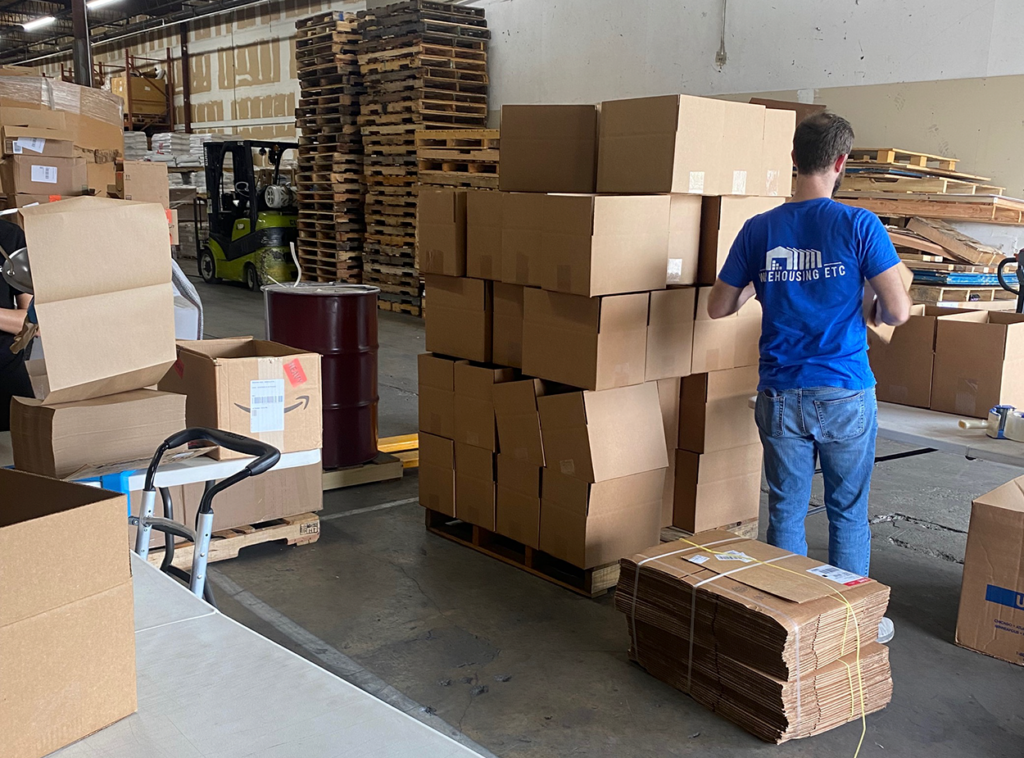
The outbound process is observed to assess the cartonization process. Depending on the operation type, the carton size is either selected before picking or after picking; if you know where cartonization happens in your operation begin there. During observation consider: How does the staff know what size carton to use? When does the staff cartonize the order? Is the staff packing product into the optimal sized carton? Are there too many or too few of carton sizes to select from? As a best practice the smallest possible carton size that has space to protect the goods should be used for shipping to ensure the least possible amount if paid for shipping. For clarity, there is a fine line between having too many carton sizes and too few to select from. The size and requirements of your inventory dictate the carton sizes required in your operation, but if volumes of some items are low it may not make sense to have a unique carton size just for that item so judgement is required.
18) Outbound Quality Control Process
Quality control during outbound processing is often overlooked because many believe it slows down the packing and shipping process, and in turn the operation will not be able to process as many orders if a quality control process is in place. Actually though, an effective outbound quality control processes streamline operations and establishes the necessary foundation for scaling the outbound team. Quality control on the outbound side is the warehouse’s last opportunity to confirm that the picked items 100% match the items ordered by the customer; this ensures the warehouse catches any errors before shipping to the customer. The customer catching the warehouse’s mistake is the worst-case scenario, and should not happen! Outbound quality control is simply a secondary means of confirming the picker picked the correct item(s) for the order after the pick is complete. This quality control process may be 1) a second person manually checking the picked items, 2) barcode scanning during packing, 3) weight and dimension tolerance checks, or 4) similar control checks.
Observe the outbound packing and quality control processes to assess the quality control process within your operations. Consider: How is the staff quality controlling the outbound order after it is picked? How often are errors discovered during quality control? Does the actual process happening match the documented Standard Operating Procedure? Consider measuring and tracking the number of incorrectly picked items identified during packing per picker; this identifies picking employees needing more training or being neglectful. As a standard practice it is best to have some secondary quality control process in place to catch errors made during picking, before the incorrectly picked order arrives to the customer.
19) Outbound Carrier and Service Selection Process
The outbound shipping costs of an order are generally an operations greatest direct costs to an order; that is, the cost to ship an order are the most expensive costs incurred while fulfilling the order. Additionally, the selected carrier and service dictate the final mile delivery date. Considering this, the outbound carrier and service selection process must be diligently evaluated to remove human decision making from the process. Improving the carrier service selection process can also drastically improve the processing time per order shipped. The outbound carrier and service selection process is evaluated to understand if the operation is using the right technologies and processes to streamline the process and minimize spending.

The evaluation of the outbound carrier and service selection process may be limited by the auditor’s familiarity with Transportation Management Systems (TMS), technologies, and carrier services. When assessing the carrier and service selection process consider: What system(s) are the staff using to create shipping labels? Is the staff rate shopping between carriers? How many systems is the staff using to shop for rates per shipment? Is the Transportation Management System connected to the Orders database or is the staff typing in each address while generating shipping labels? How does the staff know what shipping method to use per order? Operations should find one system where they can rate shop and compare the rates of all carriers and services they are using; this saves significant time and simplifies operations. Additionally, it is imperative that the TMS is connected to the Order Management System so that redundant data entry is not required. In the ideal system the shipping label is preprinted for the staff.
20) Inventory Cycle Counting Practice
Inventory cycle counting is an effective way to proactively manage inventory levels within the facility. Proper cycle counting processes ensure product quantities and warehouse locations are 100% accurate, and that inventory is exactly where it is supposed to be when the picker goes to pick the inventory. Inventory cycle counting processes are evaluated to determine how often inventory is counted, how accurate inventory counts are during cycle counting, and how effective the cycle counting process is.
Assess cycle count processes by observing and interviewing the staff tasked with cycle counting; depending on operations there may be designated cycle counting staff or the work may be spread across the operations team. Consider: How often is inventory being counted? How does the staff know what product to count over what frequency? Where are counts recorded to keep a cycle count log? How often are variances identified during cycle counting? Are the inventory variances investigated for root causes or does the staff adjust inventory quantities without diligent review? Data can be recorded and measured to track how much is being counted and how many errors occur during counts. As a general rule all inventories should be counted at least once per year, with more valuable or problematic inventory items counted more often. Cycle counting is most impactful when inventory variances are investigated to identify root causes, and corrective actions are taken to prevent the same type of issue in the future.
21) Staff Training and Understanding of Their Impact
The training of the staff and the staff’s understanding of their impact on the entire operation is one of the most valuable assets your operation has available, and best of all this audit point is 100% in the hands of the warehouse to improve. Ultimately the staff are the ones doing the work so they must be trained to perform in a certain way whether anyone is watching them or not. Additionally, if the staff understands the impact their work has on the total operation then they can 1) make better decisions, 2) identify opportunities for improvement in the operation from the perspective of their role, and 3) be more invested in producing quality outputs for the operation. Assessing staff training and their understanding of their impact to ensure all staff is equally trained and empowered for success; the company succeeds when the staff succeeds.
Assessing the staff for training and their understanding must be objectively completed to ensure an accurate view of the true environment. Often a select few high performing or other outlier staff are assessed or interviewed, resulting in a false depiction of the situation at hand. During assessment, consider: Are all staff performing each function in the same way? Is everyone working at roughly the same pace? Are any staff treated as “favorites” or not held to the same standards? Can the staff explain what they are doing and why? Does it seem like the staff actually gives a shit about what they are doing? All staff should be trained to do things the same and held to the same standards within the operation; the best employers also provide continuous learning and development opportunities for the staff. It is important to note when consistent training and staff accountability are established then the staff begins to hold each other accountable; this is the goal.
Warehouse Audit Points – The Conclusion
Warehouse audits provide an approach for leadership to analyze operations, starting at a high-level overview and gradually honing in on the most impactful available opportunities. Impacts realized from the warehouse audit include identifying opportunities for cost savings, reducing inaccuracies and errors, measuring operations against best practices, and ensuring your operation continuously improves. While the warehouse audit can be conducted by anyone, there are limitations based on the auditor’s industry and technology familiarity that may limit the effectiveness of the audit results. For best results, the warehouse auditor must be an industry expert with deep technology expertise and experience in diverse warehouse operations.



